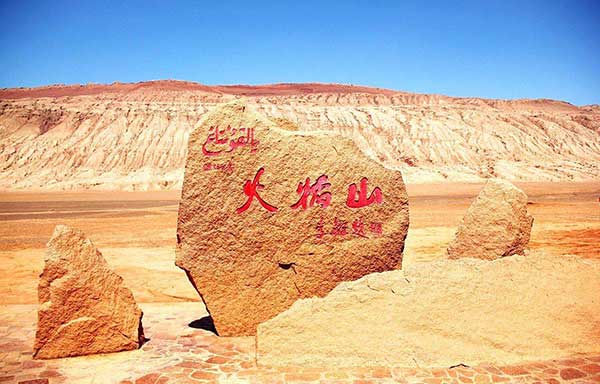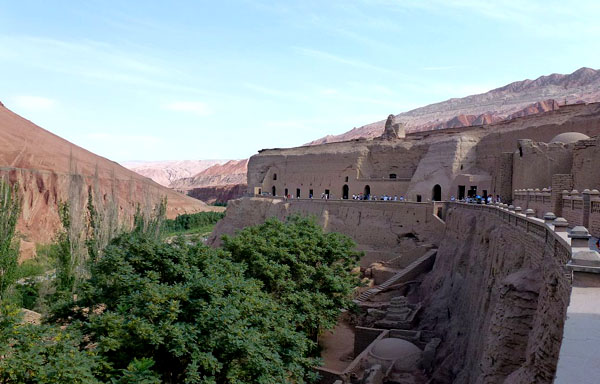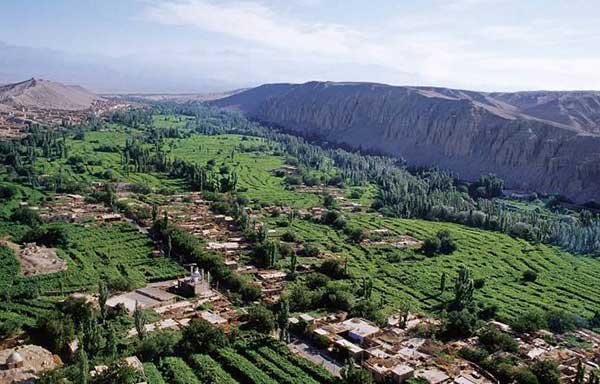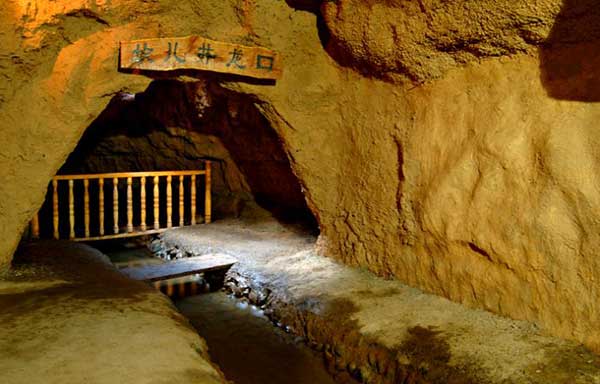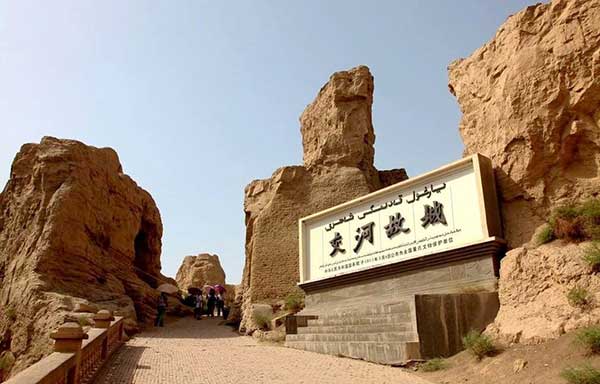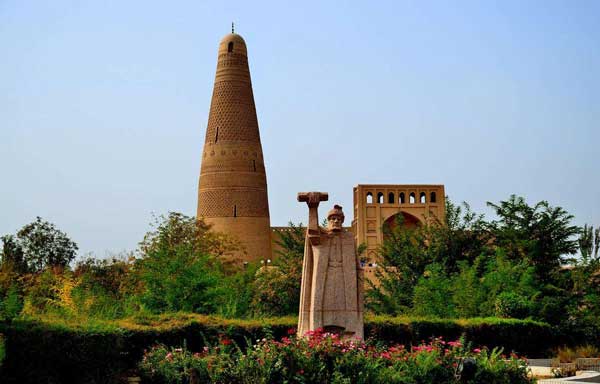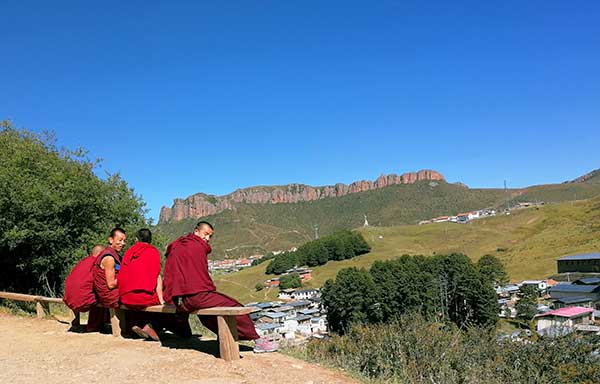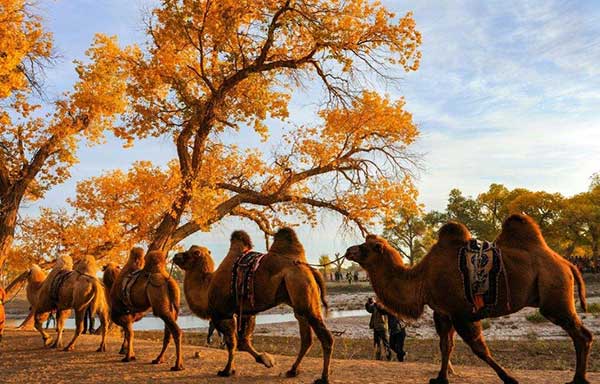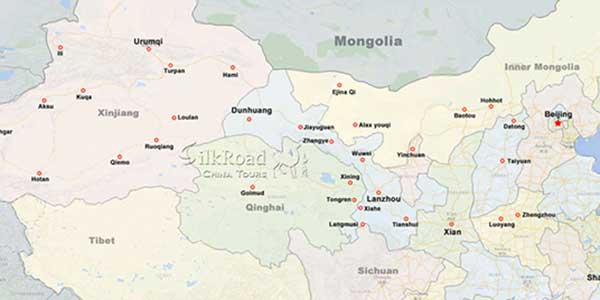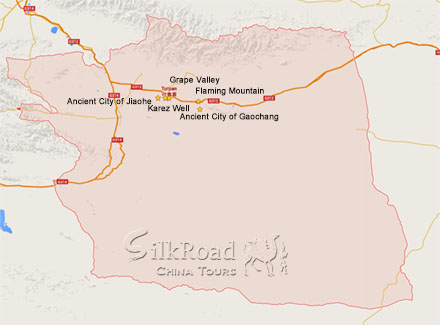 One of the world's architectural wonders hides in Yarnaz Valley, 10 kilometers (6.2 miles) west of Turpan. Like a willow leaf, the ancient city of Jiaohe (Yarkhoto) with a history of 2300 years lies between two rivers on a loess plateau atop a cliff of over 30 meters (98.4feet). The largest, oldest and best-preserved earthen city in the world, Jiaohe is 1,650 meters (5,413 feet) by 300 meters (984 feet) at its widest; with an area of 220,000 square meters (2,368,168 square feet).
One of the world's architectural wonders hides in Yarnaz Valley, 10 kilometers (6.2 miles) west of Turpan. Like a willow leaf, the ancient city of Jiaohe (Yarkhoto) with a history of 2300 years lies between two rivers on a loess plateau atop a cliff of over 30 meters (98.4feet). The largest, oldest and best-preserved earthen city in the world, Jiaohe is 1,650 meters (5,413 feet) by 300 meters (984 feet) at its widest; with an area of 220,000 square meters (2,368,168 square feet).
The ancient city was the capital of the former Cheshi State. An Indian proverb says, 'Intelligence is bound to exist where two rivers meet'. Jiaohe, meaning in Chinese where two rivers meet, is such a place. According to historical records it was home to 700 households, 6500 residents plus 865 soldiers.
Jiaohe distinguishes itself from other ancient cities owing to three features. First, it had only two city gates, the South and East Gates. The main South Gate vanished long ago, leaving a huge breach. The East Gate cut by the cliff was virtually non-existent. Second, the city faces cliffs on three sides, so there are no city walls commonly seen in other ancient cities. Third, all the buildings were dug from earth, and wood was rarely used.
The central avenue, 350-meters (1148.3-feet) long, runs north from South Gate, separating the city into three parts; namely, residences for common people, temples, and residences for aristocrats.
To the west of the avenue, low buildings with sparse small temples were residences for commoners, while the high ones in the east were for aristocrats and troops. At the end of the avenue stands a large well-preserved Buddhist temple, Jiaohe Temple, with an area of 5,000 square meters (53,824 square feet).
The relics we see today featured Tang Dynasty ( 618-907) architectural style. Houses were dug downward from the earth, and as no house gates faced the streets, military defense was apparently priority.
At the end of the 8 Century, the city was tossed into the reigns of the Turpan, Hui, and Mongols. Residents fled from the destroyed city continuously until in the beginning of the 14 Century, the city was abandoned, as was its glory and prosperity of over 2000 years. Miraculously, owing to the arid climate and remote location, the ancient city of Jiaohe remains intact, leaving us a rare exemplar of an earthen castle.
Gallery
Attractions in the area
Related Tours
General Information
Alias: Yarkhoto
Loc: 9 km from Turpan
Entrance: 70 RMB
Open Time: 10:00-18:30
Relevant blogs
-
How did the name of Tianshui in Gansu come about?
The name Tianshui is very pleasant to the ear, and it reminds one of that exquisitely beautiful verse, "After getting drunk, one doesn't know if the sky is in
-
The 8th Silk Road Hotel Festival was successfully held i
On December 27th, the "8th Silk Road Hotel Festival" grandly opened at the Yujing International Hotel in Zhangye. This hotel festival gathered industry experts,
-
The Karez Irrigation System in Turpan has been selected
On September 3rd, at the 75th Executive Council Meeting of the International Commission on Irrigation and Drainage held in Sydney, Australia, the 2024 (11th bat
-
What is the connection between "dragons" and "snakes
In traditional Chinese culture, the snake has a dual identity of auspiciousness and danger. Ancient people believed that the snake not only possesses divine cha
-
Endangered Przewalski's Horses Spotted at Dunhuang Yume
<p>In early February, a group of special "visitors"—the Przewalski's horses—appeared at the Dunhuang Yumen Pass scenic area in Gansu Province, a U
-
The Fourth Dunhuang Cultural Tourism Supplier Conference
On the morning of February 18th, the Fourth Dunhuang Cultural Tourism Supplier Conference in Northwest China commenced at the Dunhuang International Convention






